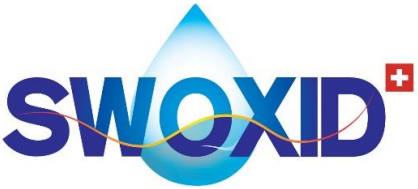- Pathogen free water
- 50 Liter/day/m2
- Cleanable: lifetime minimum 5 years



Creativity and Innovation
The discovery of photo-catalytic water splitting and photo-catalysis dates back to the 1970’s.
Since then, several semiconductor nano-particles have been found to have remarkable photo-catalytic activity to eliminate health-threatening bacteria, viruses, worms and persistent, bio-accumulative organic water pollutants as pharmaceuticals, pesticides and endocrine disruptors. Surprisingly, despite significant research efforts, studies are mainly remained in the stage of laboratory experiments and only limited number of products using this technology can be found on the market. Materials and devices with sufficient efficiency, stability and low cost are yet to be demonstrated.


 Among the known semiconductor photo-catalysts, titanium dioxide (TiO2) is the most popular owing to its excellent chemical stability, low toxicity and low cost. The core element of the device is the innovative nano-porous, photo-catalytic and mechanically stable titania aerogel. The device is a low cost, durable and easy to operate which allows the production of bio-hazard-free drinking water from contaminated water resources.
Among the known semiconductor photo-catalysts, titanium dioxide (TiO2) is the most popular owing to its excellent chemical stability, low toxicity and low cost. The core element of the device is the innovative nano-porous, photo-catalytic and mechanically stable titania aerogel. The device is a low cost, durable and easy to operate which allows the production of bio-hazard-free drinking water from contaminated water resources.
Three essential functions are integrated in the device: mechanical filtration, oxidation power and pasteurization.
The components of the device are readily available allowing replicability and scalability in many countries
Adaptability to Local Environments
The core element of the device is the innovative nanoporous, photocatalytic and mechanically stable titania aerogel. The device has a simple and robust architecture. The operation of the filter can be easily understood. It requires minimal maintenance and the maintenance can be performed by acidic liquids. (in low income communities consumables that are available and not too expensive to obtain such as lemon juice, vinegar or fizzy drinks may be used).

Sustainability, Health & Safety Impacts
Sustainable, or appropriate, technology is defined as, “Technology that can be made at an
affordable price by ordinary people using local materials to do useful work in ways that do the least possible harm to both human society and the environment,” (W. Cunningham, M. Cunningham, Saigo, 1999).
The Swoxid panels operate off-grid, it sterilizes contaminated water with sunlight.
Titanium is present in the Earth’s crust at a level of about 0.6% and is therefore the fourth most abundant structural metal after aluminum, iron and magnesium. Titanium is obtained from various ores that occur naturally on the Earth.The most important mineral sources are ilmenite (FeTiO3) and rutile (TiO2). Major ilmenite deposit regions: eastern coast and western coast of Australia; Richards Bay in South Africa; eastern coast of America; Kerala in India; eastern coast and southern coast of Brazil, so the main component of the composite membrane is available on nearly all continents. Rutile and ilmenite are extracted from sands that may contain only a few percent by weight of these minerals. After the valuable minerals are separated, the remaining sands are returned to the deposit and the land recultivated.
